
Death by Thesis
Carol Shumate, April 4, 2018

I gave my report on Day Two of my grad school career. Goldsmith debated every word that came out of my mouth, accusing me of using terms imprecisely. I was from then on notorious as the example of How Not to Succeed in Grad School. This and my language handicap made me decide not to bother with a doctorate but to take a master’s degree and run. To leave with a master’s required writing a thesis. Goldsmith’s known areas of expertise were Germanic, Slavic, Nordic, and East European languages, so I decided it would be prudent to stick to western European topics for my thesis. I consulted a professor who had given a seminar on satire, asking her to suggest novels in, say, France, Spain, or Italy. She suggested looking at Rabelais and Cervantes. Only two authors, I thought. How hard can that be? I promptly submitted the proposal, assuming she would be my advisor. To my horror, I was told that Cervantes was one of Goldsmith’s areas of expertise, and “Wasn’t I lucky to have such an expert for a thesis advisor?”
This was the early warning sign for me that something trickster was afoot. I was learning, like Oedipus, that you meet your destiny on the road you take to avoid it.

And this was only one of my focus texts. The other was equally gargantuan and is, in fact, the source of that word in our language: Rabelais’ Gargantua and Pantagruel. This verbal monstrosity is actually a series of five novels. Don Quixote comprises two very long ones. I had to read all of them in the original languages, the sixteenth-century versions of Spanish and French. These two masterpieces spawned my own permanently-in-progress unfinishable work. Both of them, I now realize, epitomize trickster works of literature, seducing and abandoning the reader, and turning the world upside down. And my own trickster was clearly at work here: I had tried to take the easy way out of grad school and now I was faced with an avalanche of work.
Here, I must admit, Dr. Goldsmith was inordinately helpful. I had to meet with him to officially launch my research, and at that meeting he suggested that I focus on the topic of judgment and pointed me to a critical chapter on this topic in each work. The topic did not interest me much, but I was so intimidated by him that I did not resist. That turned out to be fortunate, because he had handed me a bite-sized, digestible chunk out of a huge torrent of words.
The Jungian connotations of Goldsmith’s name have not escaped my notice. Moreover, Goldsmith’s suggested topic held even more Jungian irony, though I did not realize it until years later: Judgment is one of the two categories of Jung’s mental processes, the other being perception. It is a central theme of Jung’s (1921/1971) Psychological Types that we must balance our use of perception with judgment, and vice versa. This plays out in our personality type in our dominant and auxiliary functions: one is a perceiving function, the other a judging function. When we over-rely on one or the other, trouble occurs. I was going to discover something that Goldsmith probably knew intuitively—that I had a dearth of judgment and an oversupply of perception. My dominant function was a perceiving function, and it was much more fun than my auxiliary judging function. As I was to discover, it would be a judging function that would send me into a tailspin with this project.
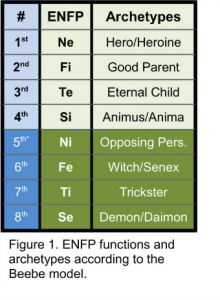
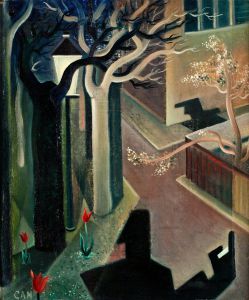
The thesis research in the library was tedious and laborious, but working in my inferior function was nothing compared to what came next—being plunged into an unconscious place: my trickster function. Our unconscious functions are not just uncomfortable; they sometimes seem not even to exist—until they rear their ugly heads in a neurosis. Being plunged into our less conscious functions resembles that old joke about high school: long periods of excruciating boredom punctuated by brief moments of abject terror.
When I had dragged myself through every available research source, there was nothing left to do but write. The trouble was, I was drowning in theories. I normally began a paper by organizing the ideas into neat categories, then arranging them into a logical sequence. But now, whenever I tried to organize the stack of note cards, I could not decide on a sequence. The whole thing seemed so circular that I couldn’t find the beginning. I would decide on a starting point and spend an entire day trying to organize the cards appropriately, promising to write the next day. I kept redefining the thesis statement, continually reconsidering it from different angles. Sequencing is the operational forte of introverted sensation, my baby function. If I had slept a lot in the library during the research phase, I was now nearly comatose. I couldn’t maintain the required concentration long enough to sit, let alone write. Each morning, I would see that my previous day’s decision was wrong, and I would reconsider the thesis statement again and re-organize the whole thing once more. The hypothesis was a moving target that I never hit.
Jung would have noted that Goldsmith’s critique of my first oral report—my imprecise use of terms—pointed to inadequate introverted thinking (Ti). Introverted thinking is the function we use when constructing theories to make sense of something, and so it must be engaged in academic research, which aims to create new knowledge. As Beebe put it, the Ti function “reflect[s] on whether a particular construction … accord[s] with the conviction of inner truth” (2017, p. 31). Introverted thinking seeks ever greater precision in expressing that truth. According to Beebe’s eight-function/eight-archetype model, introverted thinking falls in the seventh position for my type, the trickster position. Introverted thinking is a judging function, but if undeveloped it may fail to reach a judgment and simply circle the drain. I did not know then that this is often how trickster Ti manifests: continually redefining, refining, and going in circles to the point of total confusion. I spent about six weeks stuck in this “paralysis by over-analysis.” I couldn’t move forward and I couldn’t go back. I was stuck in a trickster’s double bind. I was trying to write about judgment, but I was completely unable to muster a judgment.
Eventually, I reached the point of being unable to face those note cards. I put them out of mind for a while. And that’s when disaster struck: I lost them. All 300 cards. My inner trickster had helpfully rescued me from the odious research cards by rendering me unconscious while it threw them away, thus ridding me of a loathsome task. I spent several days searching the campus for that gigantic stack of note cards, wrapped with elastic bands. I looked in all my usual haunts: classrooms, library carrels, favorite café tables. I even asked the campus janitors to look for them. The cards were gone. A thousand references, quotations, and page numbers had subverted Lavoisier’s Law of Conservation of Mass.
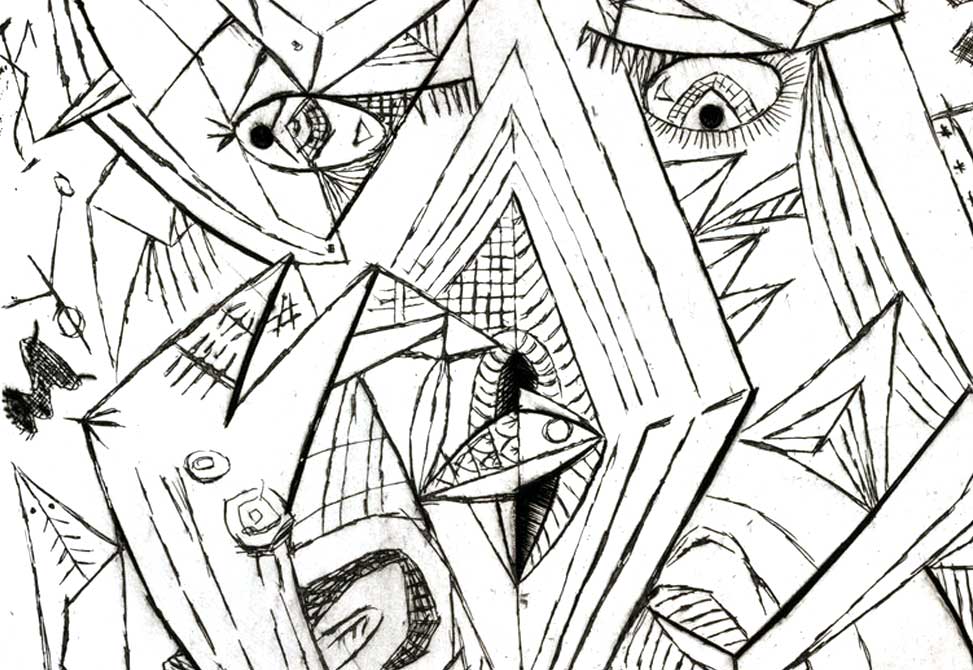
Finally, after days of depression, I understood that I had one other option, though not a pleasant one: I could try to re-write from memory everything that had been on those cards. This meant going back into my inferior Si again! Though memory would never be my strong suit, the previous six to eight weeks of doing nothing other than shuffle the cards like Sisyphus in Vegas had had some effect. And so, in a big hurry to get everything out while I could still recall it, I threw the words onto the page as fast as I could, writing in longhand on lined paper. I wrote like a fiend. Of course, there were no references, no sources, and no footnotes. I couldn’t bother with anything as trivial as accuracy at this juncture. I was in a race against the growing black hole of forgetfulness in my mind. I didn’t care if the logic was circular, I didn’t care whether I was writing from the beginning point or not, and I didn’t care that Goldsmith would assassinate every word. Terrified of stopping lest I forget it all, I simply regurgitated everything I could recall. When I drew a blank on a topic, I didn’t brake to look it up; my dominant extraverted intuition (Ne) just made something up.
And this is when something peculiar began to happen: These space-fillers were often jokes, puns, or other odd tidbits that seemed to come straight out of my unconscious because they were so unlike me. Maybe my Ne dominant took me into my 8th or demonic function, extraverted sensation (Se); extraverted sensation can be a great joker and storyteller. My conscious mind told me this would not qualify as “academic discourse.” Academe requires gravitas, my inner critic argued. These jokes will get you thrown out of the department. “Good!” I snapped back at myself. “Let them throw me out! That would be an improvement of my life!” In retrospect, I see that the new Ne ideas and the crazy Se jokes that popped out played an important role in the process: They kept me from getting bored with the Ti writing style and falling asleep again. I even grew curious to see what would come out of my pen next.

Eventually, to my surprise, I had a complete first draft. All I needed were references—no big thing when you’re in the manic phase. I airily breezed back to the library, re-researched the whole thing, and tried to retrofit the data to what I had written—the opposite of standard research procedure. Of course, the data did not fit. Remarkably, this did not alarm me. It seems that once I had jettisoned perfectionism, I was completely unfazed by the grossest imperfections. I had reached a stage of acceptance of my incompetence.

Finally, at the end of the academic year, it was done—under the deadline. I delivered it to Goldsmith’s office at about 5:00 p.m. one afternoon. He raised an eyebrow and said without a smile that he would get back to me. It suddenly occurred to me that I had probably committed a huge faux pas in the academic process: After our first meeting, I had not spoken a word to my advisor. It had been a full year since we had met the first time. I believe now that his restraint and withholding of unsolicited advice allowed me the space to discover my own thought process and to develop my own voice. This is what introverted thinking needs in order to find expression. It operates independently of the collective voice that guides extraverted thinking.
I went to bed that night with peace of mind. I expected that Goldsmith would hate my thesis and would nitpick every line, and that I would have to spend months revising. I didn’t care. I had passed out of the stage of Good Student that had been my chief persona for many years and was now willing to be Mediocre Student if that was my fate. This is what Goldsmith had been trying to teach us smart-alecks in the first place: You can’t learn if you don’t know how ignorant you are.
Goldsmith surprised me by calling at 9:00 a.m. the next morning—only hours after I’d dropped off the manuscript. This could not be good. I steeled myself to hear Mr. Punctual tell me of some major flaw in the manuscript that had prevented him from even reading it. Maybe I had used the wrong format and would have to re-type all 200 pages.
To my shock, he told me that he had stayed up all night reading my thesis, unable to put it down. I was stunned to hear him say that he had “laughed and laughed” all the way through: He loved the jokes! Who knew Goldsmith had a sense of humor? Then he said in his punctilious, Germanic, back-handed-compliment way, “Even zough you completed your thesis in order to leave viss a master’s, I must insist zat you stay for a PhD. Viss just some additional vork, you can turn zis into a doctoral thesis.”
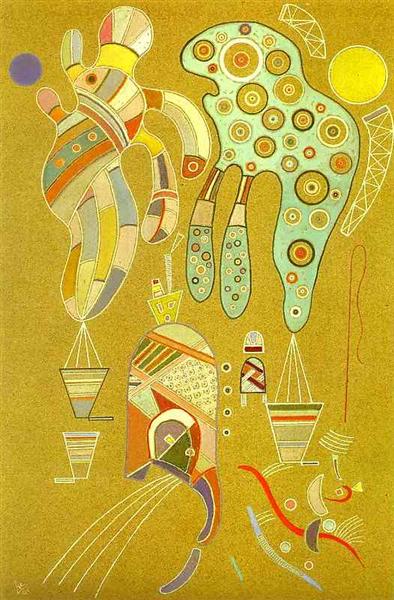
Beebe (2014) offered a succinct solution to the problem of enantiodromia: “By letting go of our expectations, we will find that some of our expectations will be met.” He was pointing out that the American addiction to mastery is a poison. We have to relinquish our determination to develop competence in all things in order to have satisfaction in anything. Perfection is static. It imprisons the psyche. Growth and progress are imperfect, so when we aim for perfection, as we always do, the psyche must sometimes trick us into relinquishing it in order to grow. By forcing me to confront my imperfection, my psyche led me along a circuitous route that involved completing two theses in order to get a PhD.
Dr. Goldsmith became my friend and staunch supporter. He even gave me private tutoring in German and art history. I think of him now as I think of Jung: a demanding but caring guide, one who, like Jung, never presumed to tell someone what to do but merely pointed out inconsistencies with reality. It was no accident that I had chosen rhetoric as my first topic in his class, and no accident that he saw the appeal it held for me, the ability to persuade others through word-weapons—a classic example of unconscious trickster introverted thinking. His detachment and relentless truthfulness broke me of my addiction to that most primitive definition of rhetoric and my insatiable need for approval. Pleasing others had motivated me for so long that I had nothing to replace it when it was pulled away. Losing that as a motivation, I had to develop my own internal motivation. If no one was going to applaud, then who was I performing for and why? That was my real crisis. The thesis was only the form it took.

Beebe made a radical proposal when he suggested that the trickster and not the senex is oppositional toward the eternal child, an idea he first explored in his 1981 essay on the trickster. His eight-function model’s tenet that the seventh trickster function shadows the third eternal child function implies that we must surrender the innocence of the child in order to access our trickster defenses. The eternal child archetype and the trickster archetype are connected by a quality of youthfulness, but while the former is innocent and pure, the latter’s duplicity means it cannot be pure. The trickster is the dark embodiment of the creativity of the eternal child, and to access that creativity requires surrendering the halo of the divine child with its infantile omnipotence. It is the eternal child’s omnipotence that blocks anima integration, for the anima function is the site of our inferiority complex. According to Beebe, we have to make the descent into the underbelly of the psyche and get our hands dirty with the trickster before we can integrate the anima/animus.
My extraverted thinking eternal child likes to play with ideas generated by my dominant extraverted intuition, putting them into piles and moving them around like chess pieces. I had gotten stuck in that game board of my mind, eternally reorganizing the note cards. Surrendering the puella aeterna Te function to access my trickster Ti function meant relinquishing the perfection of the illusory world of play that the eternal child believes is hers by right. Accepting the trickster within means acknowledging our own tendency to be deceitful about our incapacity. The eternal child would rather withdraw from the field than admit imperfection, let alone deal with it. The trickster lives in the nether world of the borderlands where purity cannot exist. We need to find a way to give expression to both archetypes, and we all tend to prefer the eternal child and the function it carries, as Lenore Thomson’s (1998) work on the tertiary has shown. If we do not voluntarily acknowledge our trickster, it may force us to surrender control. Grappling with the trickster is painful but rewarding; it enables us to accept our anima/animus, the seat of our inferiority, and to be re-animated by it. The trickster destroys us to save us.
References
Beebe. J. (1981). The trickster in art. San Francisco Jung Institute Library Journal, 2(2), 21-54.
Beebe, J. (2004/2017). Understanding consciousness through the theory of psychological types. In Energies and patterns in psychological type: The reservoir of consciousness (pp. 19-50). London, UK: Routledge. (Reprinted from J. Cambray & L. Carter, Eds., Analytical psychology: Contemporary perspectives in Jungian analysis, 2004, pp. 83-115, Hove, UK: Brunner-Routledge).
Beebe, J. (July 23, 2009). The memory of the hero and the emergence of the post-heroic attitude. Congress of the International Association for Analytical Psychology held in Barcelona, Spain, August 29-September 3, 2004, Barcelona. Reprinted on IAAP site, Spring, 78, Politics and the American Soul.
Beebe, J. (August 7-8, 2014). Selected topics in psychological type [workshop]. Sponsored by Type Resources.
Jung, C. G. (1921/1971). Psychological types (R. F. C. Hull, Trans.). In H. Read et al. (Series Eds.), The collected works of C.G. Jung (Vol. 6, pp. 330-407). Princeton, NJ: Princeton University Press. Retrieved from http://www.proquest.com
Thomson, L. (1998). Personality type: An owner’s manual. Boston, MA: Shambhala Publications.
Images
Adrian-Nilsson, G. (1929). Shadows, twilight. Retrieved from wikiart.org
Bortnyik, S. (1921). The lamplighter. Retrieved from wikiart.org
Hartley, M. (1939). Sustained comedy. Retrieved from wikiart.org
Hokusai, K. (date unknown). Carp leaping up a cascade. Retrieved from wikiart.org
Kandinsky, W. (1941). Untitled. Retrieved from wikiart.org
Lewis, B. (date unknown). Trickster. Retrieved from commons.wikimedia.org
Masson, A. (1942). The sand crab. Retrieved from wikiart.org
Picasso, P. (1904). Woman with raven. Retrieved from wikiart.org




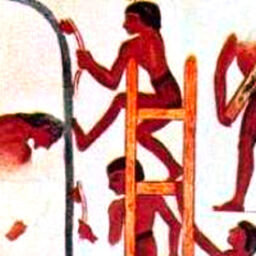



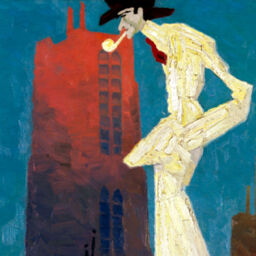

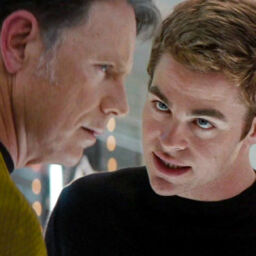

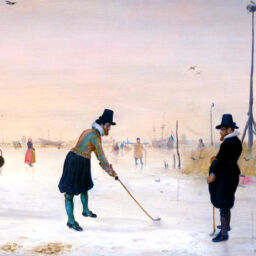
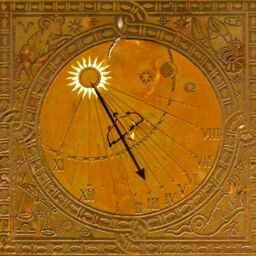




Great read!!!! Totally relatable and eye opening to why I do what I do!!!
This was great. I’m an ENFP keen to do a PhD but the whole world looks like a potential topic! It’s a relief to see the ENFP post-graduate process explained so thoughtfully and with such feeling. Thanks 🙂
WOW! Love this so much, I’ve been trying to find more in depth info on ENFP shadow functions in general, especially the Trickster. Very helpful and well-written.
Great article Carol! I really enjoyed reading it and seeing how you interwove the functions and archetypal energies.